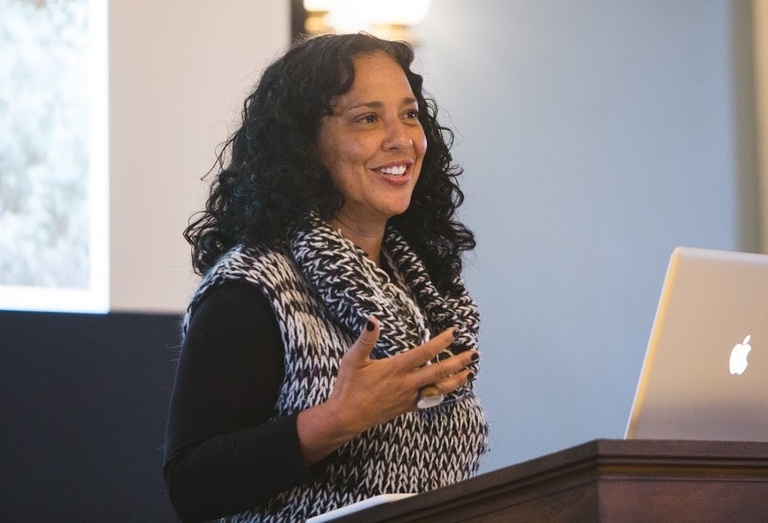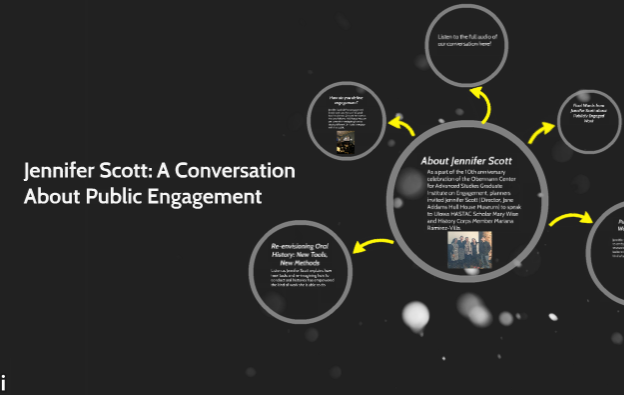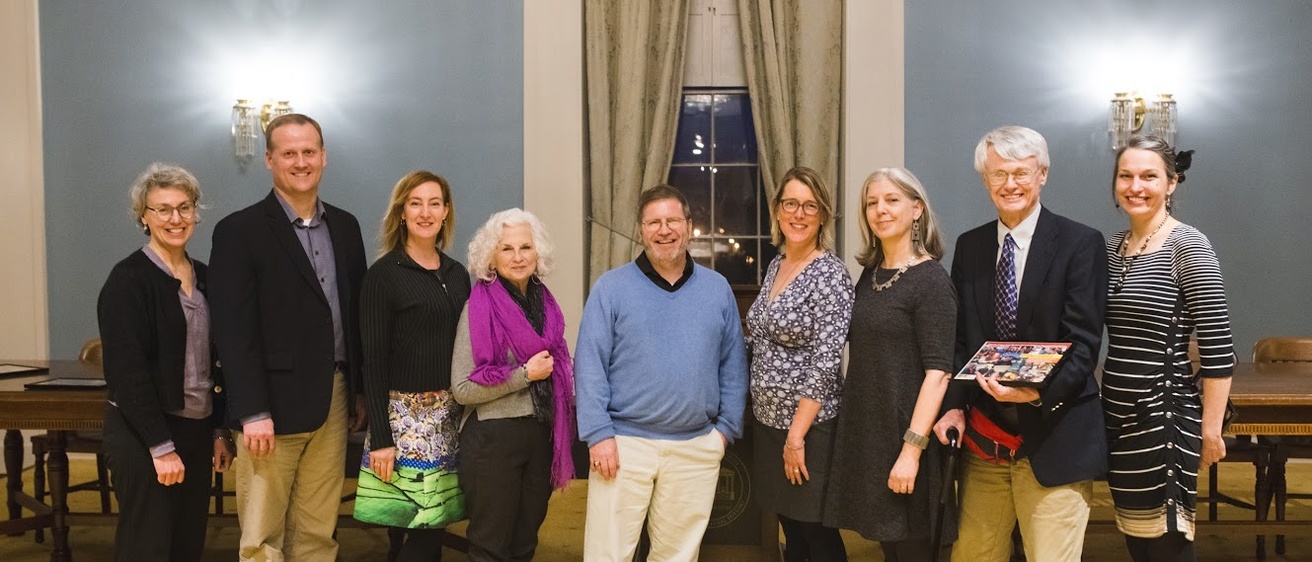On March 3-4, 2016, the Obermann Graduate Institute celebrated its tenth anniversary. In addition to welcoming back alumni of the program, including Tala Al-Rousan (Harvard), Ted Gutsche (Florida International University), Bridget Draxler (Monmouth College), and Craig Eley (ACLS Scholar, Wisconsin Public Radio), we were also joined by founding co-director David Redlawsk, currently at Rutgers and en route to University of Delaware (pictured here with eight of the nine co-directors of the Institute).
The Obermann HASTAC Scholars, Mary Wise (History) and Benjamin Schmidt (School of Library & Information Sciences) reported on several aspects of the symposium, Mary in her role as a member of History Corps, and Ben with an interest in digital media and storytelling.
History Corps Visit with Jennifer Scott

Thanks to the Obermann Center for Advanced Studies, the University of Iowa’s History Corps was privileged to a one-on-one afternoon with leading public history and public humanities scholar Jennifer Scott (pictured here). During our workshop, Jennifer discussed how she uses crowd-sourcing tools that target large groups of people to access deeply personal memories that are place-based. While working in New York City at City Lore, New York City’s cultural heritage center, Jennifer Scott and her team developed City Lore: Place Matters. Using digital humanities data entry in tandem with public history methodologies, this project allows every user of the form to enter a location in an urban landscape that is always changing. This is a new form of preservation and engagement!
History Corps, an Obermann Center Working Group, has integrated this revolutionary methodology into our Iowa Native Spaces Project. Working with our Ioway and Meskwaki collaborators, we are using a methodology modeled on Jennifer Scott’s work to identify locations for our oral history ethnographic fieldwork. This methodology is demonstrative of the fruitful revelations that can come from exchanges between DH and publicly engaged scholars.

Here is a Prezi presentation that includes several audio clips from Jennifer's conversation with us: http://prezi.com/wwblrrmfzpu3/?utm_campaign=share&utm_medium=copy&rc=ex0share
Telling Engagement Stories
Bridging the gap between the academy and the broader public has been a perennial problem. In a session that I [Ben Schmidt] attended, there was a clear concern for how to address topics of great controversy but deep relevance to a broader public. The panelists, Ted Gutsche (School of Journalism & Mass Communication, Florida International University) and Craig Eley (an ACLS Fellow at Wisconsin Public Radio) spoke about public outreach, particularly related to a project with which Gutsche is deeply involved regarding the impact of climate change on the Miami area, Eyes on the Rise.
When reaching the broader public with digital humanities projects, the actual platform can make an enormous difference for the researcher. As each project is unique, it is up to the collaborative team of researchers to determine what highlights the research well, along with sufficient representation of the results and methodology. The presenters provided examples of particularly dynamic websites that can present a project in a variety of fashions, equally well but differently. As with anything created on the internet and for digital natives, the challenge comes from raising awareness of the project, so social media (Tweeting, hashtags, etc.) plays a crucial role in the initial push of the project.
All these methods present their own enormous amount of time and production needs. As this online outreach is a new step, the dividends it produces can increase a projects impact exponentially, provided this presentation stage is done effectively. The most crucial take away from this insightful panel was unlike traditional academic research, a DH project does not end when its research ends. Increasingly, DH projects can reach enormous audiences about serious issues that will impact their daily lives.
